There is a growing trend in physical therapy for dogs that you might have heard about. It’s called hydrotherapy, and it’s increasingly being used for canine rehabilitation for a number of different health conditions.
But what type of therapy are we talking about, and how can it help your best friend? Let’s take a look at exactly what are some of the benefits of hydrotherapy and why it might be just what the doctor ordered for Fido.
What is Canine Hydrotherapy?
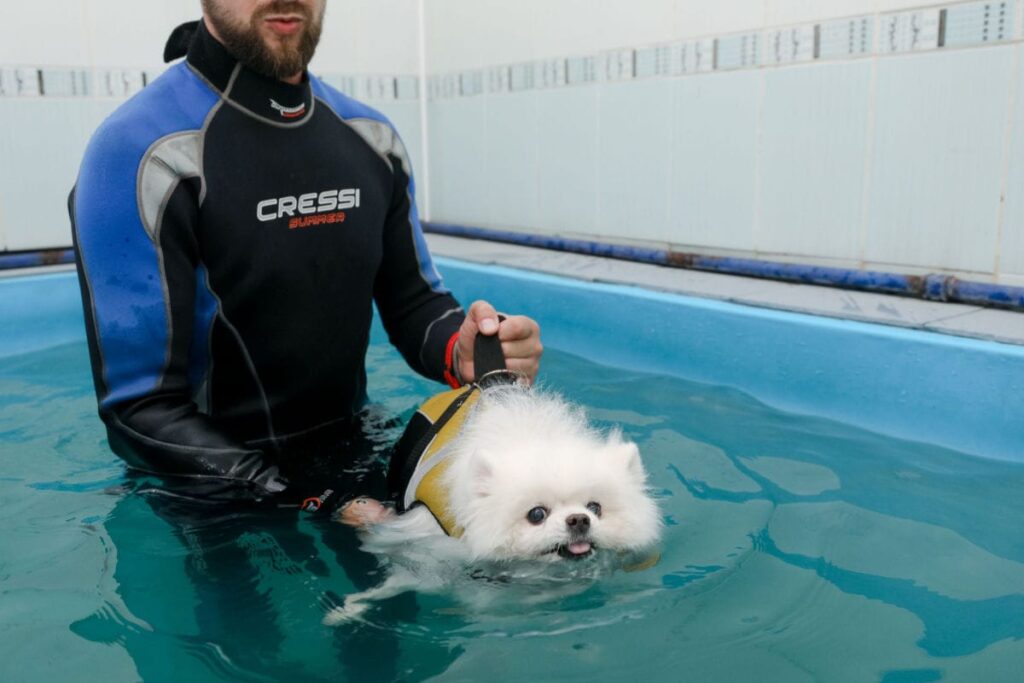
Hydrotherapy just means water therapy, and it’s something we’ve seen used in human physical therapy for a long time. You often see people engaging in water aerobics and swimming as a low-impact form of exercise.
You’ve probably also used saunas, whirlpool baths, or mineral baths yourself. There are many benefits to this kind of water therapy too. We’ve known it in humans for a long time, and we’re discovering that it’s also good for animals.
Hydrotherapy for dogs came about much more recently after it was first used in the horse-racing industry. Horse owners discovered that there were many benefits to having racehorses walk in water, and that same practice was also used for greyhounds in the racing industry.
As the benefits became more obvious, underwater treadmills for dogs were developed, and canine hydrotherapy as a form of physical therapy became more common.
For our canine friends, hydrotherapy usually means swimming or walking in water. That might mean on an underwater treadmill, or it can just be done in shallow water at the beach.
It can be done for purposes of canine rehabilitation in a swimming pool, or it can just be for fun. Either way, it’s good for your pooch.
What are the Benefits of Hydrotherapy for Dogs?
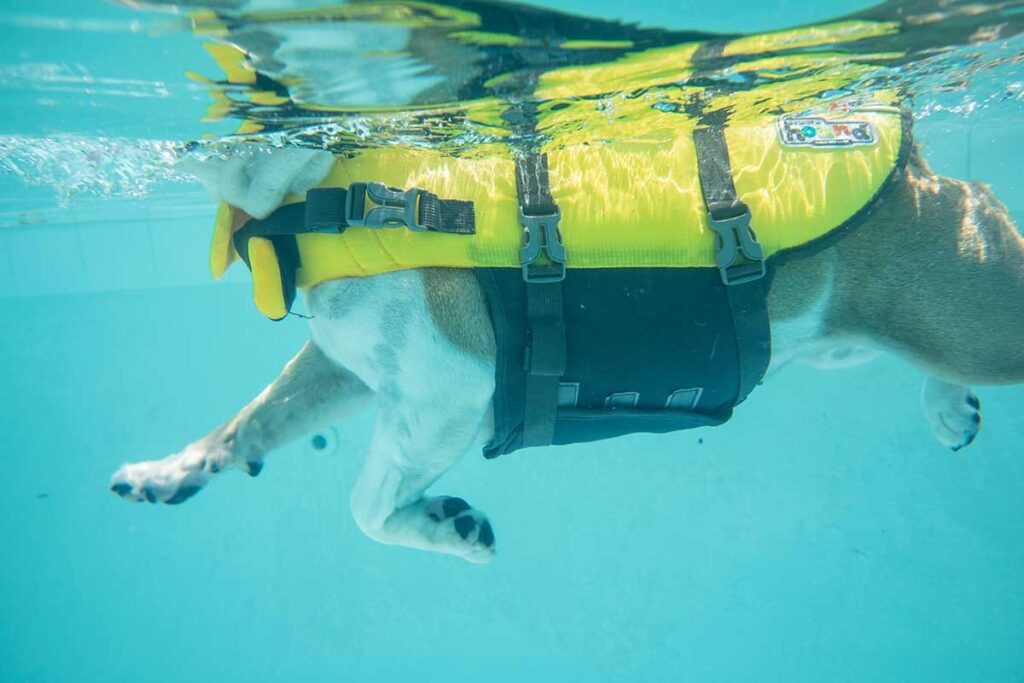
There are several benefits of hydrotherapy for humans, horses, and dogs too! For one, hydrostatic pressure, which is the pressure exerted on your dog’s body when he’s submerged in water, helps reduce inflammation.
Water also provides both buoyancy and resistance, which helps improve muscle strength. It also helps build endurance without placing extra stress on joints.
Additionally, bathing in hot or warm water eases aches and pains, dilates blood vessels, and relaxes joints, all of which help heal injuries.
All of those benefits of hydrotherapy can also help your pooch walk better, feel better, and be healthier overall. It’s also great for keeping athletic dogs in peak condition.
How Can Hydrotherapy Treat Canine Health Conditions and Injuries?
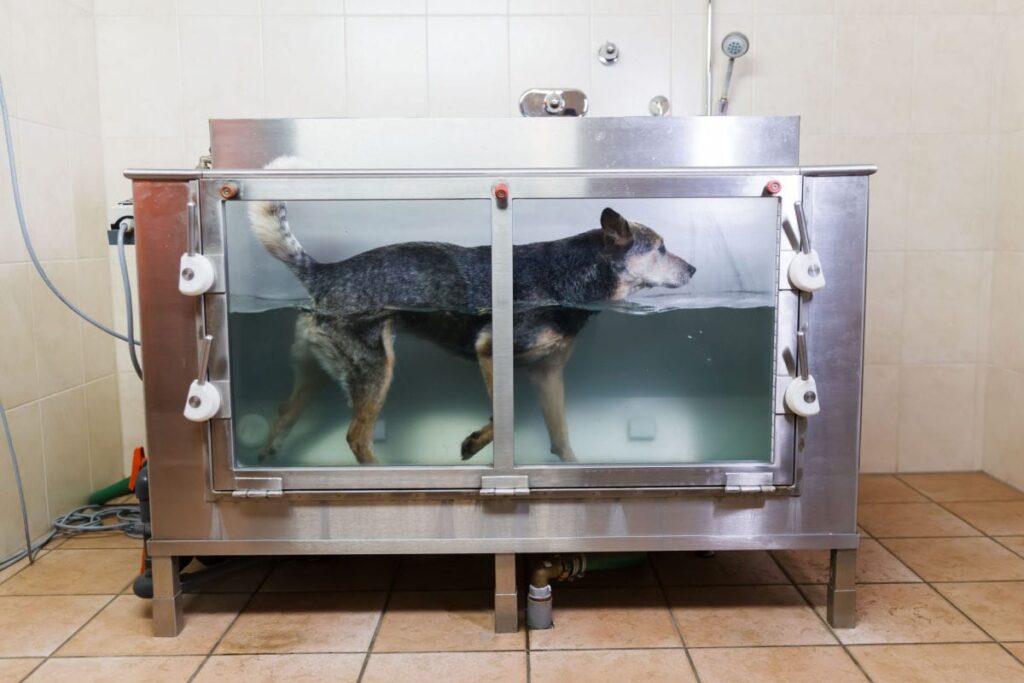
Hydrotherapy is increasingly used as part of a comprehensive canine rehabilitation treatment plan. It can help treat a wide range of health conditions and injuries, and it can be used in patients of all ages.
What’s great about hydrotherapy is that it provides low-impact exercise for senior dogs and dogs with injuries or painful health conditions like arthritis and hip dysplasia. It also helps with post-operative recovery to help dogs regain a full range of motion.
Ensuring that dogs with those kinds of problems can get non-weight-bearing exercise can prevent muscle wasting without risking more damage to an injured area.
Aquatic therapy can actually treat or help numerous health problems, including the following:
- Neurological conditions
- Orthopedic injuries and conditions
- Ligament injuries such as an anterior cruciate ligament (ACL) tear
- Weight loss
- Rebuilds muscle mass
- Improves cardiovascular output, which also helps improve stamina
- Any health condition that can cause atrophy due to decreased blood circulation
How Else is Canine Hydrotherapy Used?
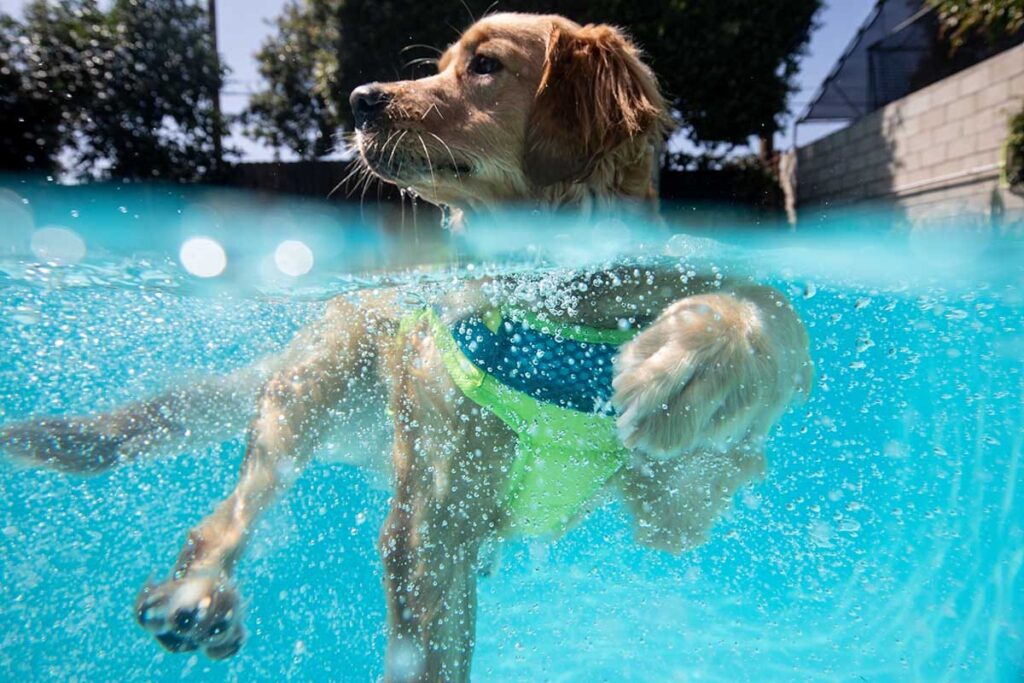
Hydrotherapy can also be used to prevent injuries and improve your pooch’s physical conditioning. It’s a great overall cardiovascular workout, which will help your dog burn more calories and build up his musculature.
What’s more, the water level and underwater treadmill speed can be adjusted so that your pet gets a different experience every time. This means a hydrotherapist can provide an individualized experience for your pet, and they can vary your dog’s exercise routine.
It’s an especially useful tool for physical conditioning for sporting dogs and other active breeds. It can help improve athletic performance with the risk of muscle strain and injuries that other types of exercise present.
Additionally, it can help accelerate physical results, particularly when you compare it to similar land-based activities. As an example, if your dog trots on an aquatic treadmill with the water level at elbow height for 2 miles, it’s equivalent to running 4 or 5 miles on the land.
That dramatically improves the benefits your dog can get in one therapy session when compared to other forms of exercise. Moreover, hydrotherapy is low-impact, meaning you don’t get the concussive forces on your pooch’s joints as you do with land-based exercises.
Of course, hydrotherapy isn’t a panacea. It should be used as part of a comprehensive exercise regimen, particularly for athletic dogs.
What are the Different Types of Hydrotherapy for Dogs?
The form of hydrotherapy that’s right for your dog depends on his overall condition and why this kind of physiotherapy is being used. Here’s a look at some of the different types of hydrotherapy.
Swimming Pools

Hydrotherapy pools give your dog a generalized exercise experience for overall physical conditioning. It’s best to ensure the pool is heated for maximum benefit.
Your dog can perform guided exercises in the pool with a therapist. This can give him a personalized cardio workout, and it is an effective way to treat osteoarthritis and limb weakness that may be due to a neurological condition.
Underwater Treadmills
Underwater treadmills are often used for helping to treat health conditions like arthritis or other joint problems. The treadmill is encased in glass or plastic in a watertight container that can accommodate most dogs.
The water level can be adjusted so that the hydrotherapist can gradually introduce and increase weight-bearing exercises. Changing the water level allows them to control the buoyancy. As your dog gets stronger, she can begin to support more weight as she exercises.
Doggie Whirpools
This is a jacuzzi-style treatment that works much the same in canine rehabilitation as it does in the human version. It provides a water massage that can help relax your dog’s muscles.
Is Hydrotherapy Good for All Dogs?

Hydrotherapy is good physiotherapy for many problems, and it can work well for general exercise too. But it’s not a cure-all. There are some problems that don’t respond well to this type of treatment. This is particularly true for spinal injuries that are unstable.
Deciding whether or not aquatic therapy is a good idea for your best friend should be a decision made after consulting with your veterinarian. They can make recommendations for the best rehabilitation program for your pet.
Hydrotherapy for Dogs: Final Thoughts
Canine hydrotherapy is a great way to treat many problems and provide your pet with low-impact exercise. It can help your pooch get into better shape and heal from injuries or other health conditions like painful osteoarthritis. While it’s not for everyone, for most dogs, it’s okay to come on in, the water’s fine!
Dog Life Jackets for Pups New to Hydrotherapy
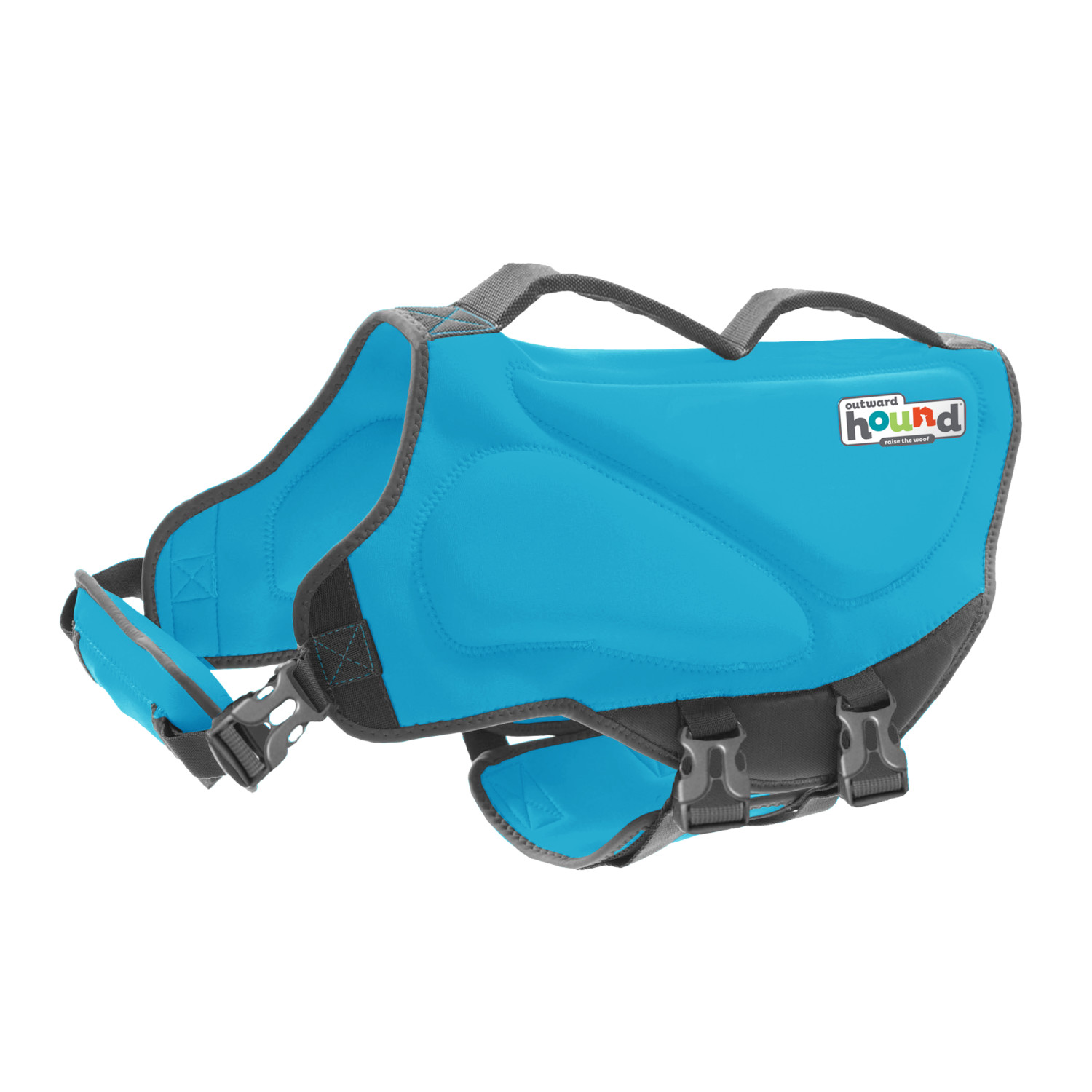
Dawson Swim Dog Life Jacket
The Outward Hound Dawson Dog Life Jacket is a high-performance dog flotation device for boating, water sports, the beach, the pool, and other water adventures with dogs. Designed with novice swimmers in mind, the neoprene side panels of this dog life vest will keep your dog safe by providing them with comfortable buoyancy and thermal insulation for chilly days on the water. A front neck float adds extra…

Granby Splash Dog Life Jacket
The Outward Hound Granby Dog Life Jacket is a high-performance dog flotation device for boating, water sports, the beach, the pool, and other water adventures with dogs. A front neck float adds extra support to help them keep their head above water. Top grab handles provide an easy way to retrieve your dog in an emergency. Adjustable straps keep them secure both in and out of water. For small dogs, sizes…
 Chewy
Chewy Amazon
Amazon
